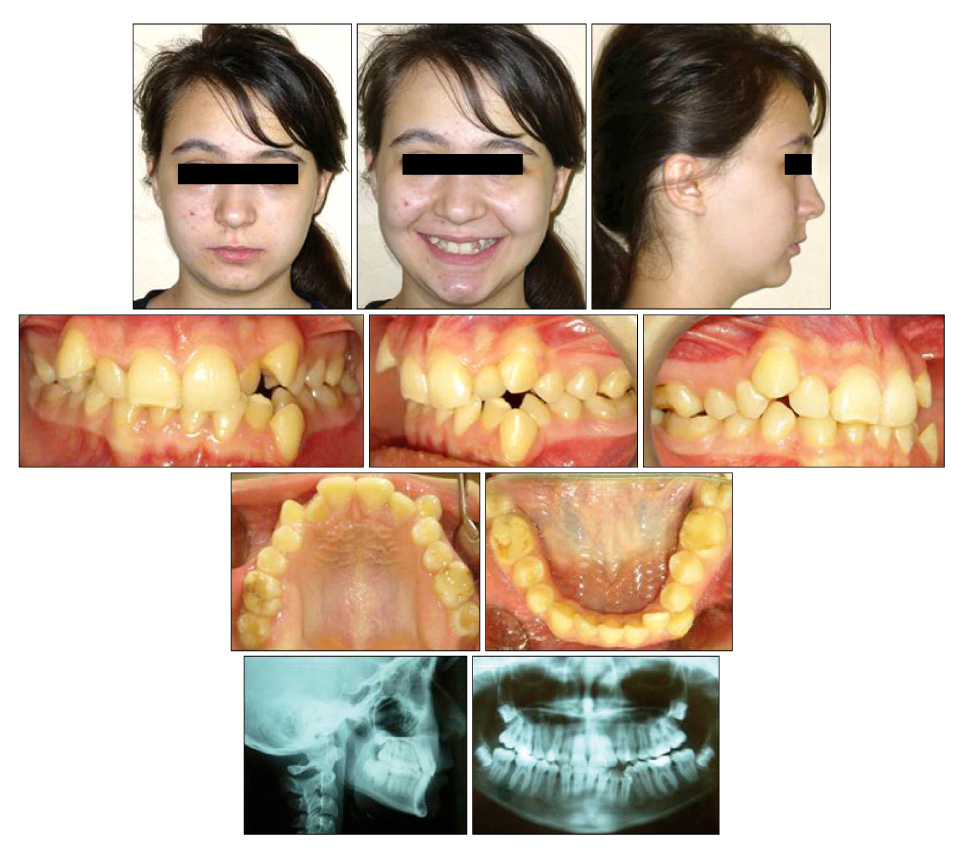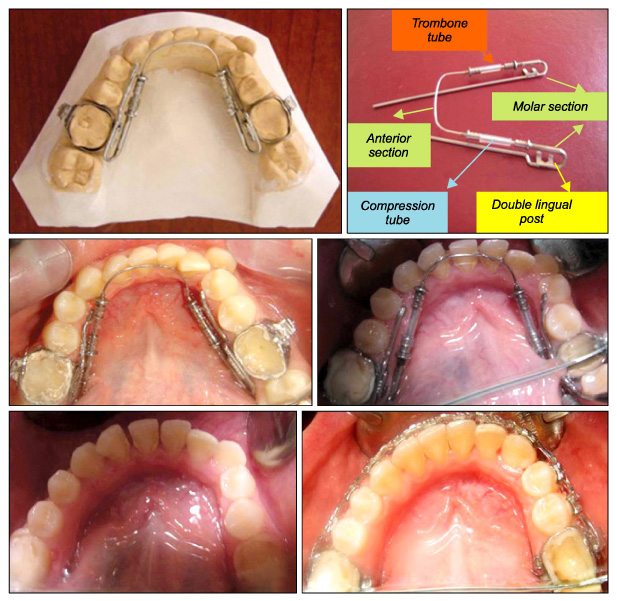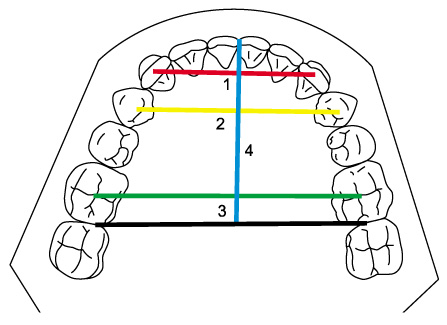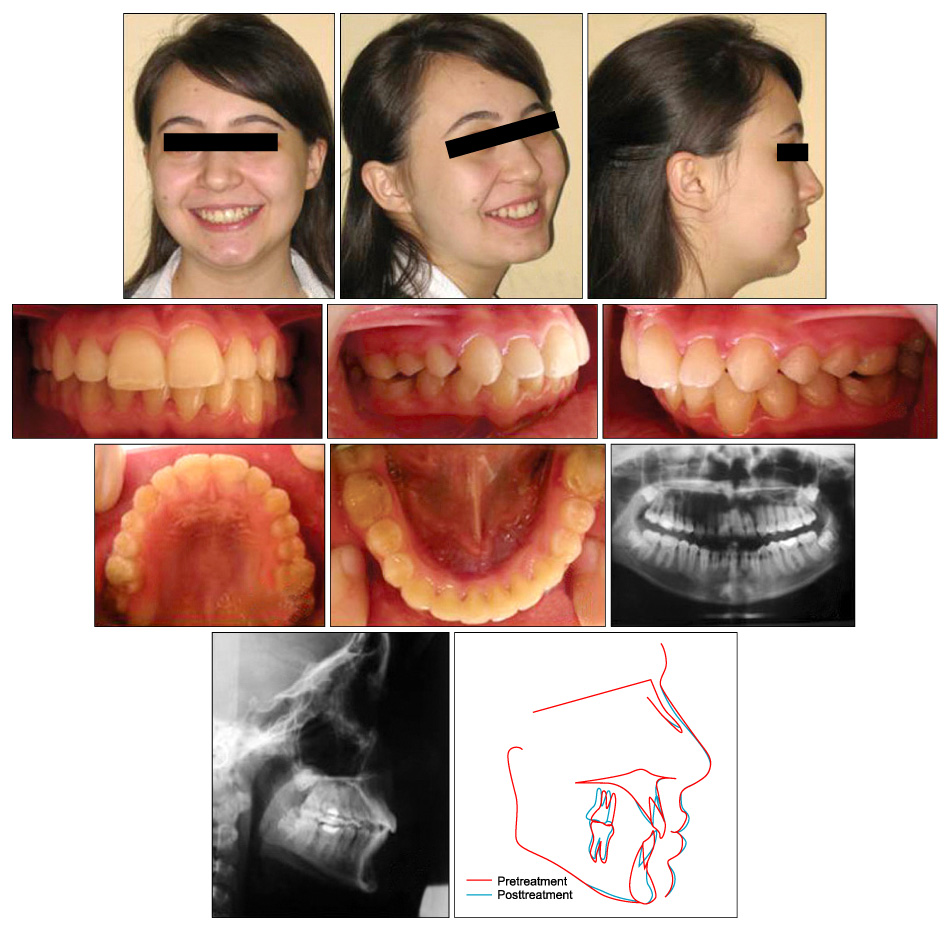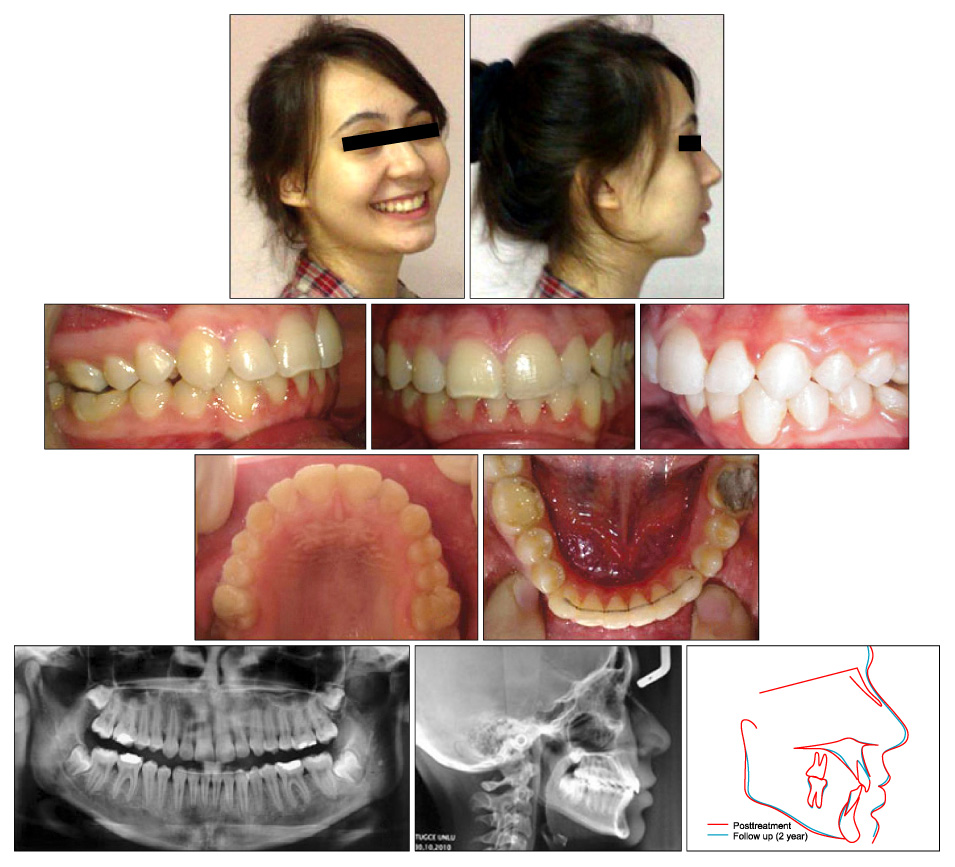Korean J Orthod.
2011 Jun;41(3):211-218. 10.4041/kjod.2011.41.3.211.
Expansion of the mandibular arch using a trombone appliance
- Affiliations
-
- 1Erzurum Maresal Cakmak Military Hospital Dental Center Orthodontics Department, Erzurum, Turkey. fidansabuncuoglu@yahoo.com.tr
- 2GMMA Haydarpasha Education Hospital, Dental Service, Istanbul, Turkey.
- 3Gulhane Military Medical Academy, Dental Sciences Center Orthodontics Department, Ankara, Turkey.
- KMID: 1975433
- DOI: http://doi.org/10.4041/kjod.2011.41.3.211
Abstract
OBJECTIVE
This case report describes orthodontic treatment of contracted mandibular arch using a trombone appliance.
METHODS
A 14-year-old girl with Class II division 2 malocclusion, retroclined maxillary incisors, and buccally displaced maxillary canines required dental expansion in 3 spatial directions to correct the contracted maxillary and mandibular arches. In the initial phase of treatment, the maxillary arch was expanded and distalized using a quad-helix appliance and cervical headgear. Following the expansion and leveling of the maxillary arch, a trombone appliance was used to expand the mandibular arch. On correction of the mandibular arch and provision of sufficient space to level the mandibular teeth, fixed orthodontic treatment phase was initiated.
RESULTS
A trombone appliance proved effective in correcting the contracted mandibular arch. Because of labiolingual and transversal expansion, the mandibular dental arch perimeter was increased by 7.4 mm; the misalignment of the mandibular teeth was corrected successfully.
CONCLUSIONS
A trombone appliance may serve as an appropriate clinical alternative for treating moderate mandibular arch crowding caused by the contraction of the dental arch.
Figure
Reference
-
1. Angle EH. Treatment of malocclusion of the teeth. 1907. 7th ed. Philadelphia: S.S. White Dental Mfg. Co.;44–59.2. Case CS. The advisability of extracting teeth in the correction of irregularities. Dent Cosmos. 1905. 67:417–420.3. Ferris T, Alexander RG, Boley J, Buschang PH. Long-term stability of combined rapid palatal expansion-lip bumper therapy followed by full fixed appliances. Am J Orthod Dentofacial Orthop. 2005. 128:310–325.
Article4. Geran RG, McNamara JA Jr, Baccetti T, Franchi L, Shapiro LM. A prospective long-term study on the effects of rapid maxillary expansion in the early mixed dentition. Am J Orthod Dentofacial Orthop. 2006. 129:631–640.
Article5. Gianelly AA. Leeway space and the resolution of crowding in the mixed dentition. Semin Orthod. 1995. 1:188–194.
Article6. Littlewood SJ, Millett DT, Doubleday B, Bearn DR, Worthington HV. Retention procedures for stabilising tooth position after treatment with orthodontic braces. Cochrane Database Syst Rev. 2006. (1):CD002283.
Article7. Schwarz AM, Gratzinger M. Removable orthodontic appliances. 1966. Philadelphia, Pa: WB Saunders Co..8. Nance HN. The limitations of orthodontic treatment; mixed dentition diagnosis and treatment. Am J Orthod. 1947. 33:177–223.9. Tweed CH. A philosophy of orthodontic treatment. Am J Orthod Oral Surg. 1945. 31:74–103.
Article10. Strang RHW. The fallacy of denture expansion as a treatment procedure. Angle Orthod. 1949. 19:12–22.11. Begg PR. Light arch wire technique employing the principle of differential force. Am J Orthod. 1961. 47:30–48.12. Sheridan JJ. Air-rotor stripping. J Clin Orthod. 1985. 19:43–59.13. Horton SJ. The transverse stability of combined rapid palatal expansion and lip bumper therapy following comprehensive orthodontic treatment (dissertation). 1997. Dallas: Baylor College of Dentistry.14. Fränkel R. Decrowding during eruption under the screening influence of vestibular shields. Am J Orthod. 1974. 65:372–406.
Article15. McNamara JA Jr. Treatment of arch length problems in the mixed dentition. Bull Pac Coast Soc Orthod. 1992. 64:42–44.16. Nevant CT, Buschang PH, Alexander RG, Steffen JM. Lip bumper therapy for gaining arch length. Am J Orthod Dentofacial Orthop. 1991. 100:330–336.
Article17. Herberger RJ. Stability of mandibular intercuspid width after long periods of retention. Angle Orthod. 1981. 51:78–83.18. Davidovitch M, McInnis D, Lindauer SJ. The effects of lip bumper therapy in the mixed dentition. Am J Orthod Dentofacial Orthop. 1997. 111:52–58.
Article19. Werner SP, Shivapuja PK, Harris EF. Skeletodental changes in the adolescent accruing from use of the lip bumper. Angle Orthod. 1994. 64:13–20.
- Full Text Links
- Actions
-
Cited
- CITED
-
- Close
- Share
- Similar articles
-
- Modified Mandibular Lingual Arch for Orthodontic Traction of Impacted Mandibular Canine and Premolar: Case Reports
- Long-term stability of maxillary and mandibular arch dimensions when using rapid palatal expansion and edgewise mechanotherapy in growing patients
- Clinical study of mandible symphysis widening
- Non-Surgical Treatment of Mandibular Condylar Fracture with Functional Appliance: Clinical and Radiographic Analysis of 1 Case
- Cantilever-Type Traction Appliance for Mandibular First Permanent Molars with Eruption Disturbances

